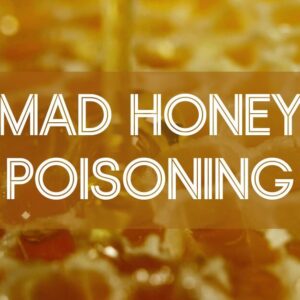MAD honey has captivated humans for centuries with its enchanting allure. Its delightful sweetness and mind-altering effects have made it famous, but few know that it originates from the flowers of specific rhododendron plants. These plants produce grayanotoxins, which bees collect and transform into honey, resulting in the creation of the psychoactive substance known as MAD honey.
Although MAD honey has been utilized in traditional medicine and rituals, it also carries risks due to its neurotoxic properties. Forensic science plays a vital role in comprehending the chemistry of MAD honey, aiding in identifying its components and assessing its safety.
In this article, we will delve into the forensic analysis of MAD honey, unraveling its mysteries and highlighting the potential dangers it poses.
Chemical Composition of MAD Honey
MAD honey comes from bees that collect nectar from specific rhododendron species like Rhododendron ponticum and Rhododendron luteum. These plants have grayanotoxins, which are neurotoxic compounds causing the psychoactive properties of MAD honey. The primary grayanotoxin in these plants is grayanotoxin I, but other similar compounds might also be present.
Grayanotoxins work by attaching to voltage-gated sodium channels in cell membranes, leading to prolonged activation and subsequent depolarization of nerve cells. This disruption in nerve function can lead to symptoms like dizziness, nausea, vomiting, and in severe cases, bradycardia, hypotension, seizures, and even death.
Forensic Analysis of MAD Honey
Analyzing MAD honey involves a comprehensive strategy to pinpoint, measure, and comprehend the diverse range of substances found in honey sourced from rhododendron plants. This procedure utilizes a variety of specialized methods and approaches designed to precisely identify grayanotoxins and other potential impurities.
Here is a detailed look at the forensic analysis techniques employed in the examination of MAD honey:
1. Sample Collection and Preparation
Forensic experts start by gathering the samples from potential sources or people impacted by poisoning. They adhere to strict chain of custody procedures to ensure the samples remain untainted during analysis. The samples could consist of honeycomb, liquid honey, or various honey products.
2. Microscopic Analysis
Microscopy methods are used to investigate the physical properties of honey samples, including their pollen composition. Analyzing the pollen can offer significant insights into the botanical source of the honey and determine if it originates from rhododendron plants, which are known to produce grayanotoxins.
3. Chromatographic Techniques
Chromatography is essential for separating and identifying different compounds in MAD honey samples. High-performance liquid chromatography (HPLC) and gas chromatography (GC) are popular techniques used for this purpose. HPLC is great for separating and measuring grayanotoxins and other compounds with accuracy and sensitivity. On the other hand, GC is ideal for analyzing volatile compounds.
4. Mass Spectrometry
Mass spectrometry techniques, like GC-MS and LC-MS/MS, are used to verify the presence of certain compounds in MAD honey. MS offers insights into the molecular structure and fragmentation patterns of these compounds, which helps in identifying and measuring grayanotoxins and other toxins.
5. Quantitative Analysis
It is crucial to perform quantitative analysis on grayanotoxins and other toxic compounds to evaluate its toxicity levels. To achieve this, calibration curves are created using reference standards. The concentrations of the desired compounds are then determined by utilizing peak areas or response factors obtained from chromatographic or spectrometric analysis.
6. Quality Control and Validation
To guarantee the precision and dependability of forensic analysis results, various quality control measures are put into action. These measures involve utilizing certified reference materials, validating analytical methods following international standards, and participating in proficiency testing programs to confirm the laboratory’s performance.
Conclusion
Forensic chemistry is crucial in uncovering the secrets of MAD honey, illuminating its psychoactive characteristics and potential dangers. By carefully examining and understanding chemical information, forensic experts offer important knowledge about its makeup and its impact on well-being.
With the use of sophisticated analytical methods, forensic labs enhance consumer protection and support informed choices regarding the oversight of MAD honey manufacturing and sales.






